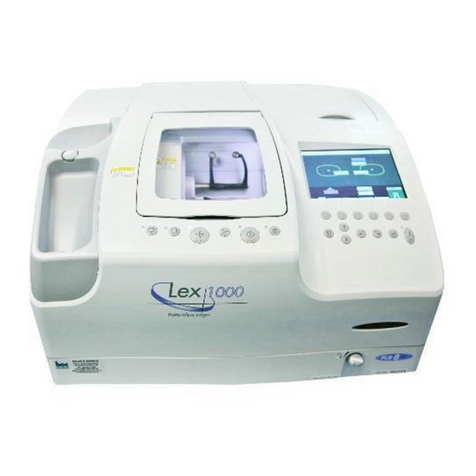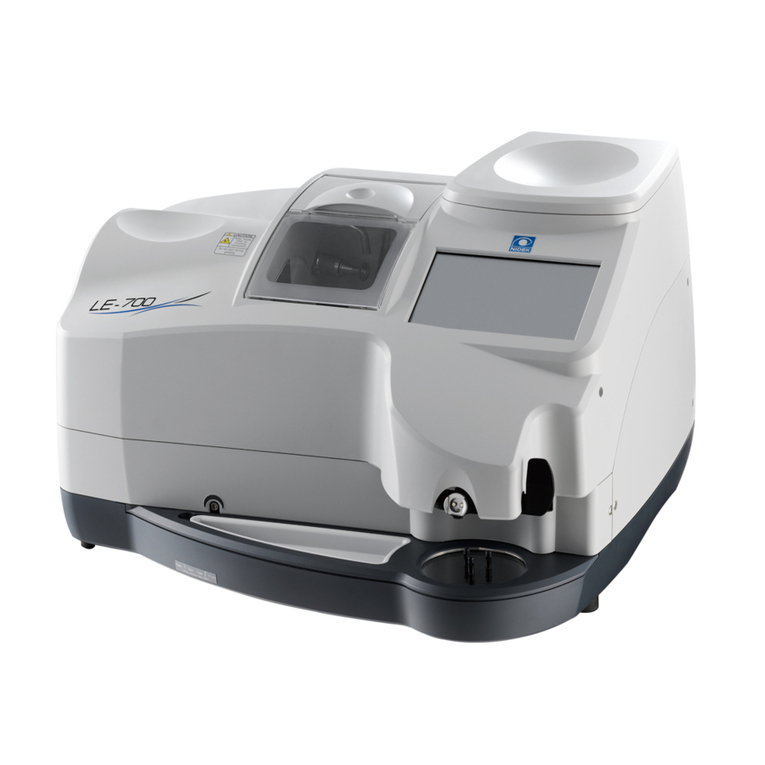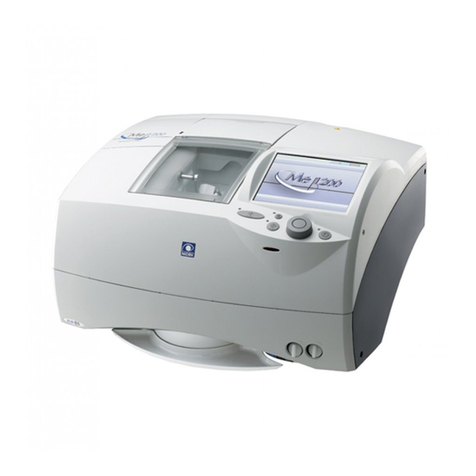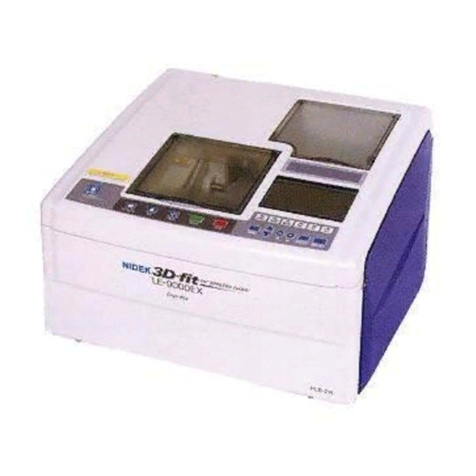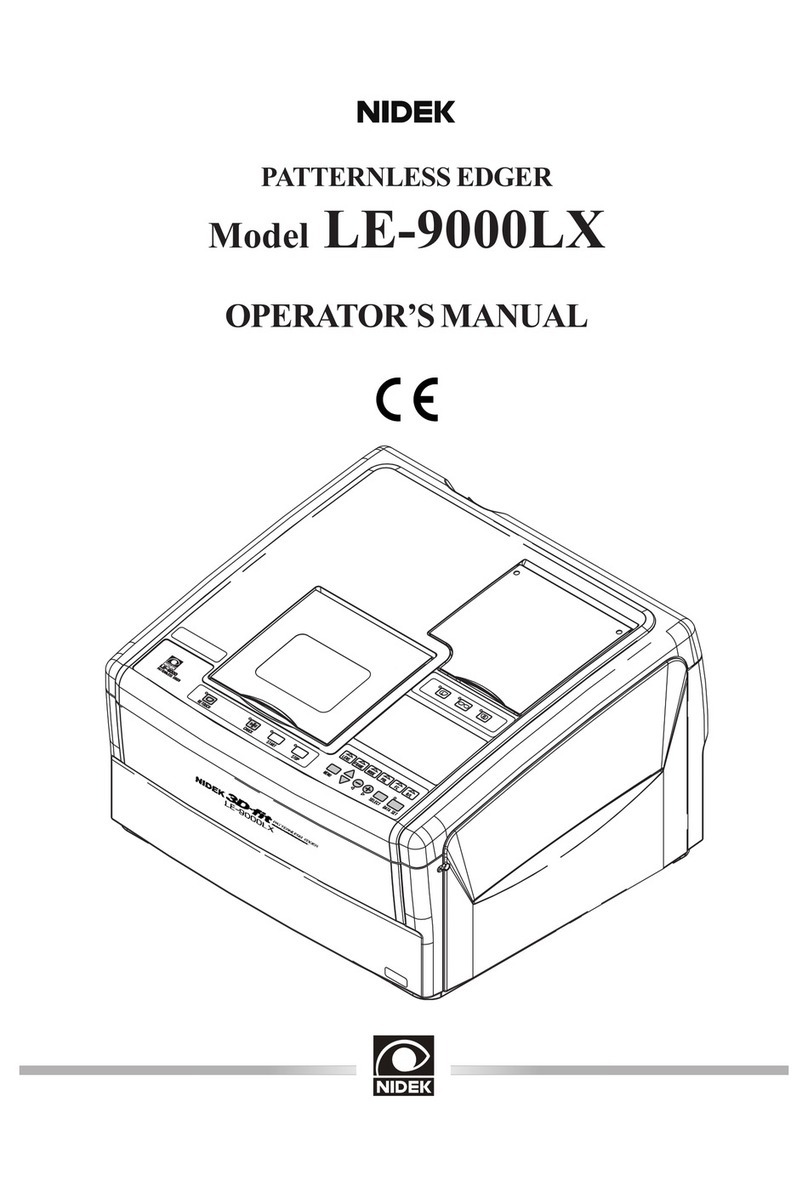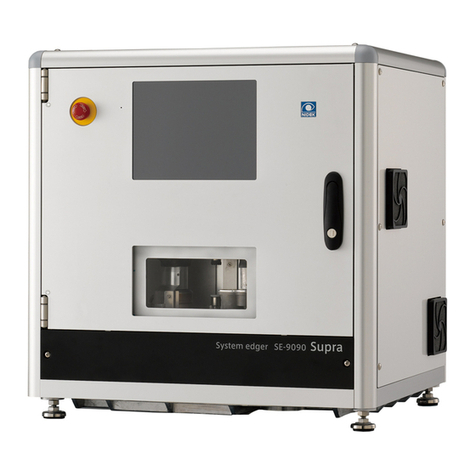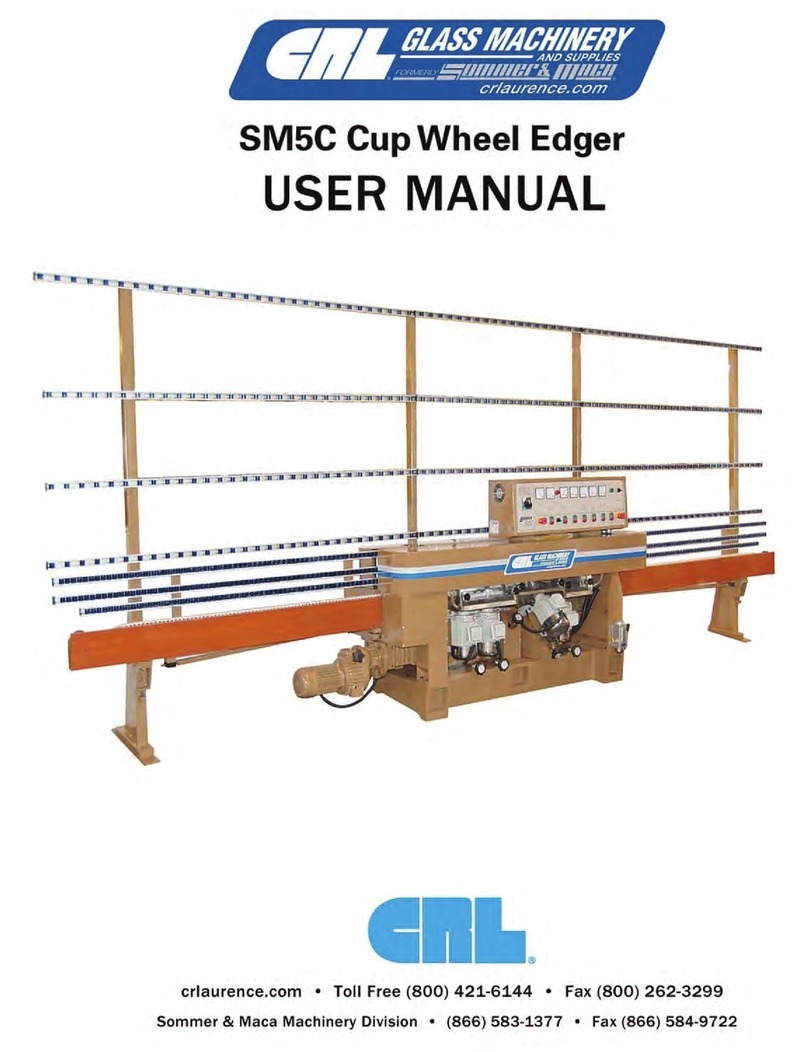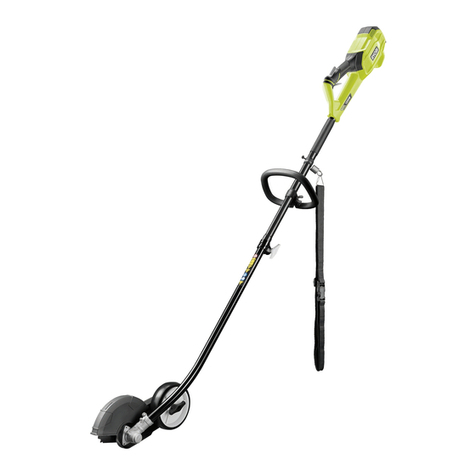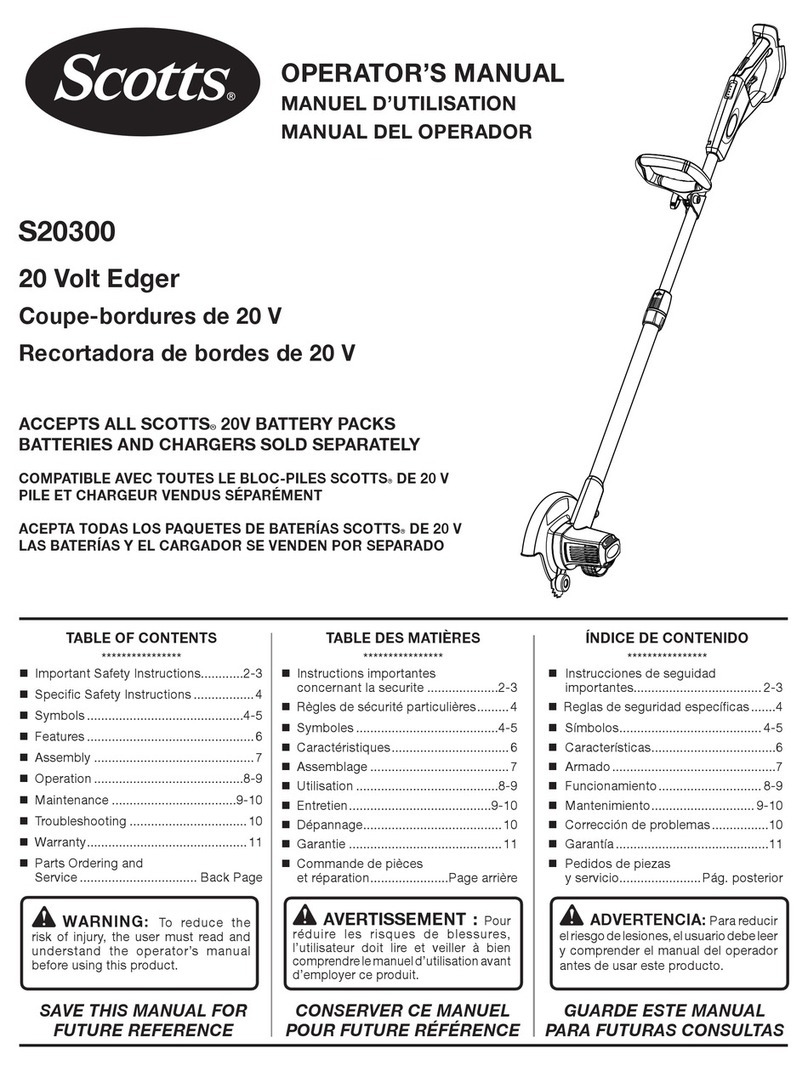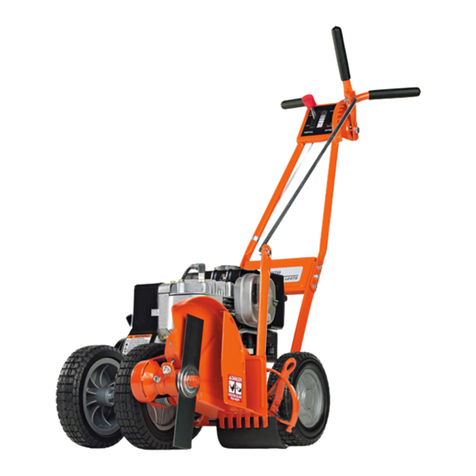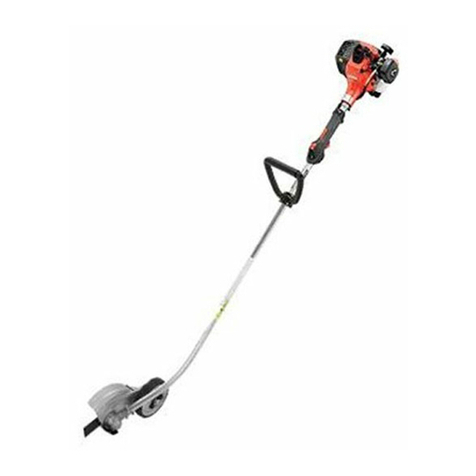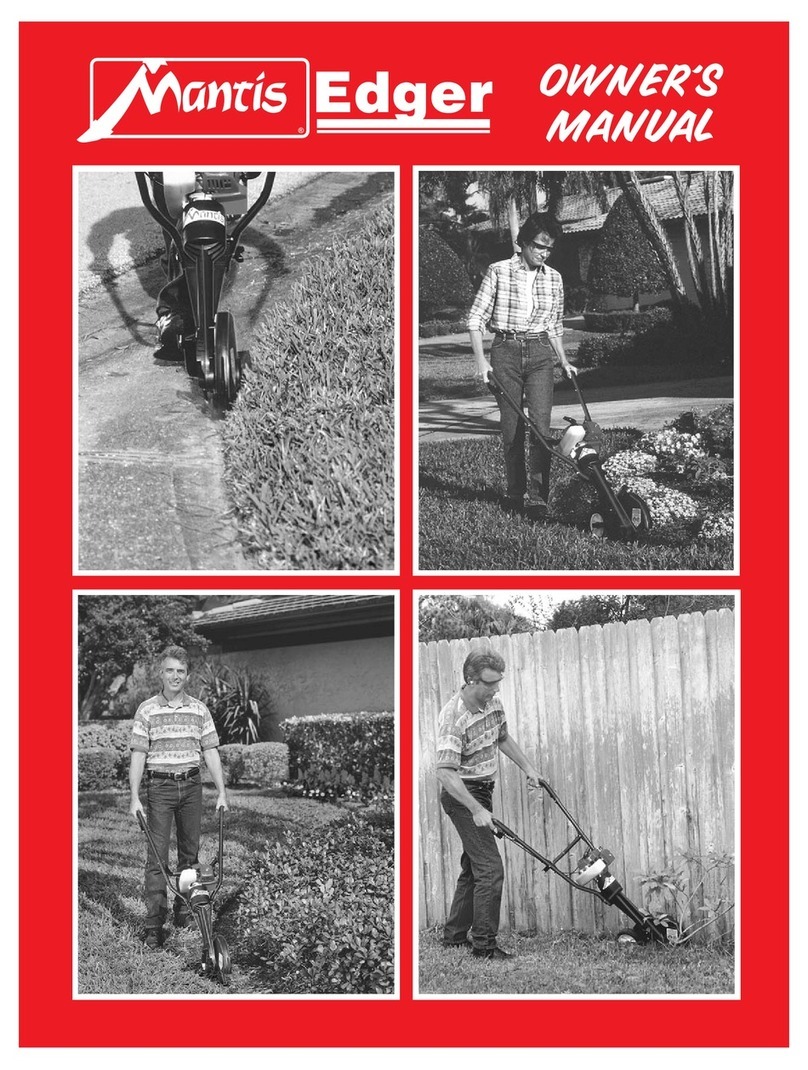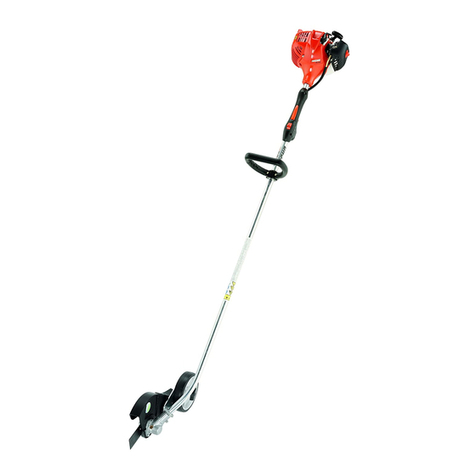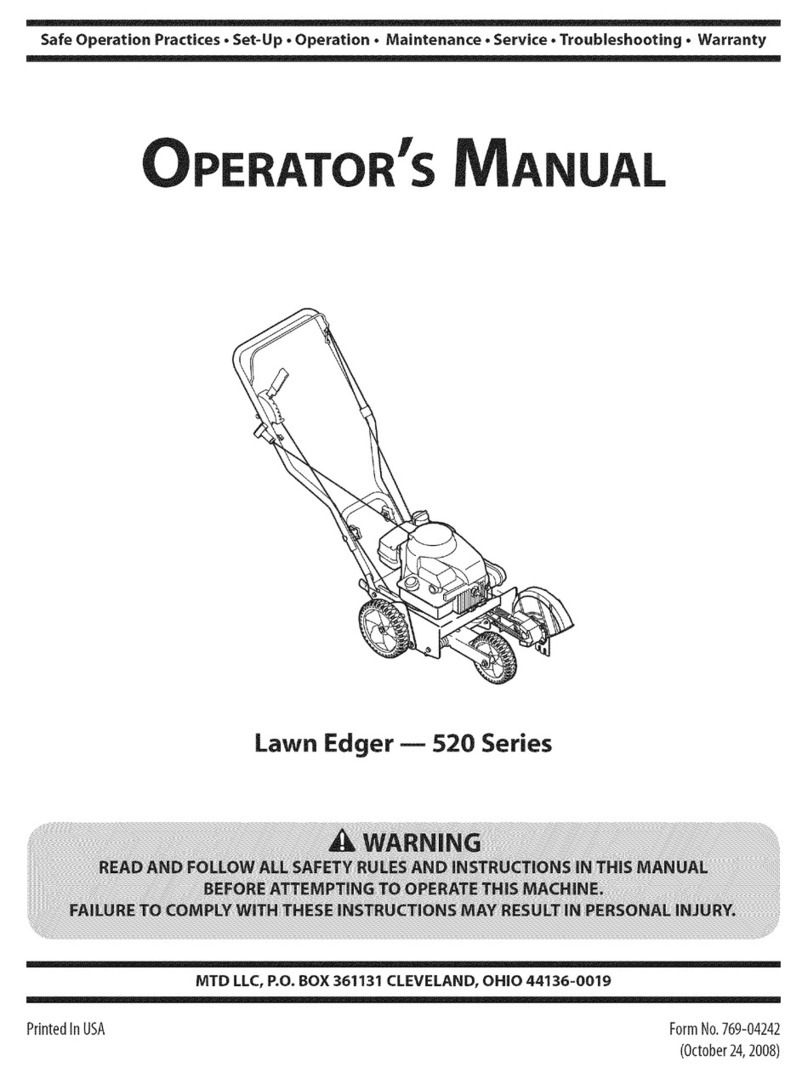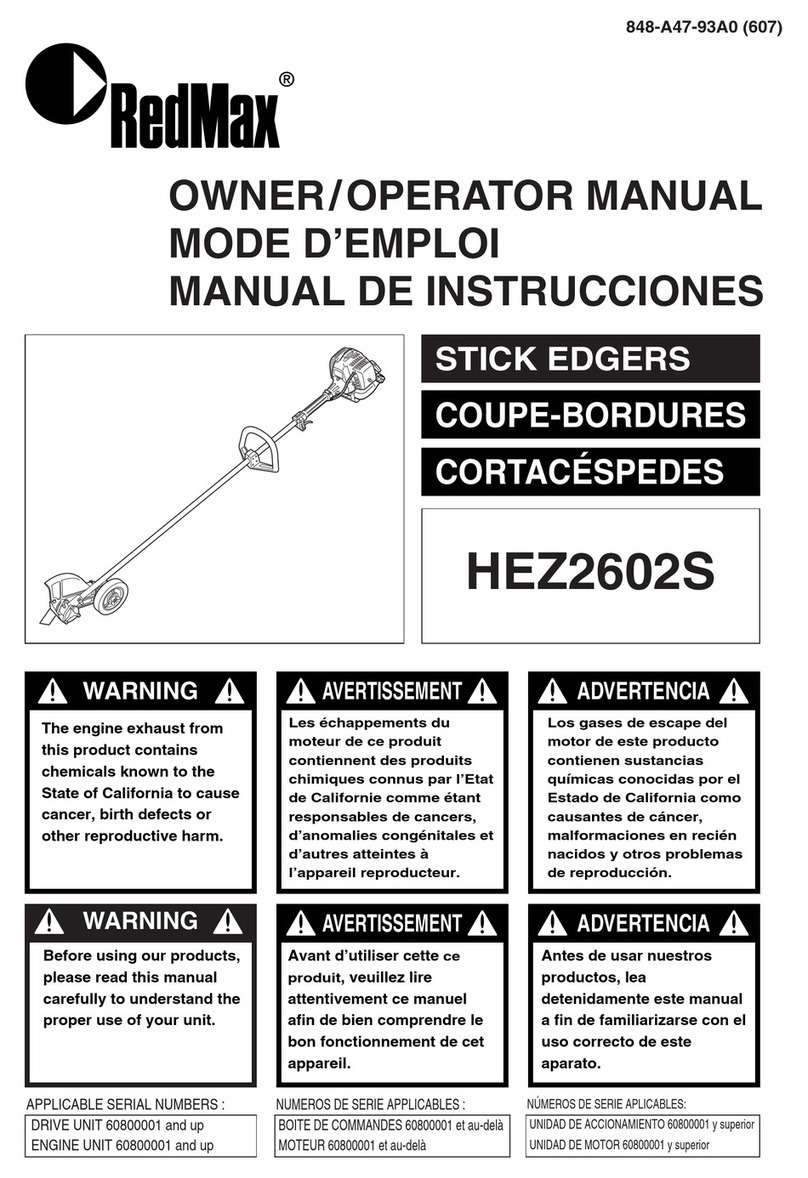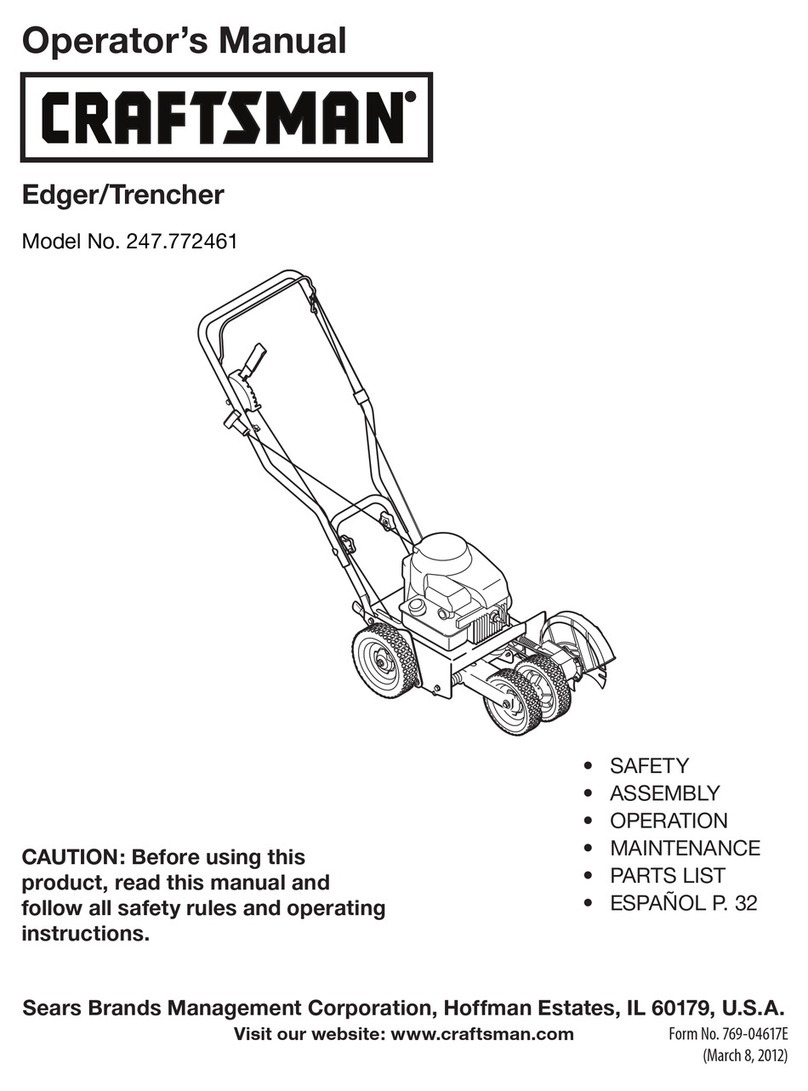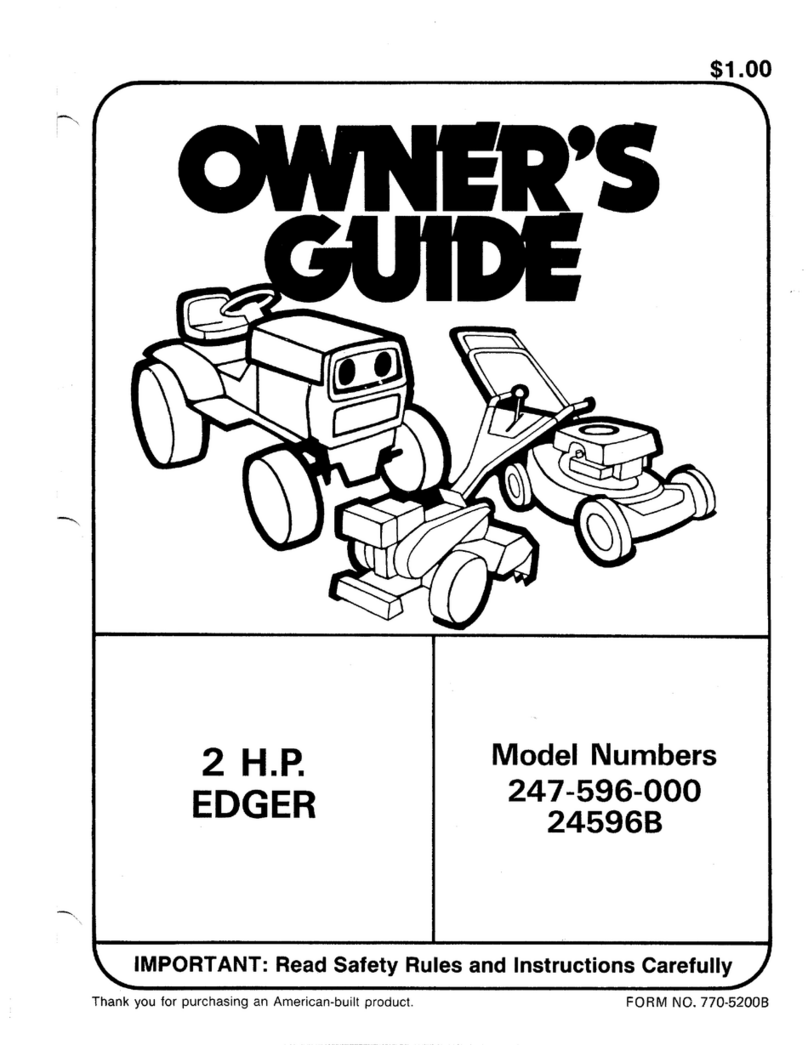
4
• The LE-700 is an instrument that uses data from the Satellite Tracer or a host computer to block a lens
with a lens cup and then process the lens at a high speed to fit into frames. Do not use this instrument for
any purposes other than the intended purpose.
NIDEK is not responsible for accidents or malfunction caused by misuse.
• Only personnel authorized by NIDEK or a NIDEK distributor are allowed to install the instrument.
• Install the instrument in an environment that meets the following conditions.
The following conditions must be maintained during use.
•Use conditions
Temperature: 5 to 40°C (41 to 104°F)
Humidity: 30 to 80% (5 to 31°C [41 to 87.8°F])
The minimum acceptable relative humidity is 30%. The maximum acceptable relative humidity is 80% for tem-
peratures up to 31°C (87.8°F) which decreases linearly to 50% at 40°C (104°F).
Altitude: Up to 2,000 m
Installation location: Interior (with low dust and free from smoke, vibration, and impact)
• Install the instrument in a location with an adequate operating area in front of the instrument as shown in
“Maintenance” (page 6).
• Be sure to wear protective gloves when using a utility knife during unpacking.
Contact by bare hands with a utility knife or sharp edge of cardboard may result in injury.
• Install the instrument on a table with a height and depth that allows comfortable operation.
Continued use in an awkward posture may result in backache.
• Do not block the cooling fan on the rear of the instrument.
Should the fan be blocked, rise in temperature inside the instrument may occur resulting in fire.
• Avoid installing the instrument where it is exposed to caustic material such as corrosive gas, acid, or salt.
Corrosion or malfunction may occur.
• Do not use the power cord other than those supplied. Also do not connect the supplied cord to any other
instrument.
Malfunction or fire may result.
If a replacement power cord is required, contact a NIDEK distributor or NIDEK service personnel.
• Do not overload the electrical outlet.
A multi-outlet supplying power to too many instruments may become overheated and cause fire.
• Install the instrument in area where the outlet that the power plug is inserted into is easily accessible dur-
ing use. In addition, ensure that the power cord can be disconnected without the use of any tool.
Otherwise, it may interfere with disconnecting of the power from the input power source in case of abnormality.
• Be sure to use a wall outlet which meets the power specification requirements.
If the line voltage is too high or too low, the instrument may not perform properly. Malfunction or fire may result.
• Completely insert the power plug into a grounded outlet as far as the prongs will go.
Electric shock or fire may result in the event of malfunction or power leakage.
• Do not place heavy objects on the power cord.
A damaged power cord may cause fire or electric shock.
• Check the connection of the feedwater and drain hoses before activating the instrument.
Electric shock due to water leakage or injury caused by wet slippery floor may result.
